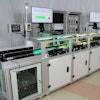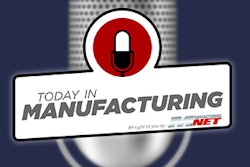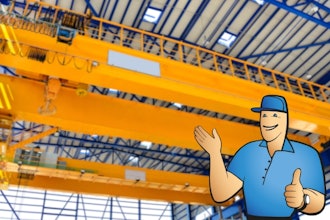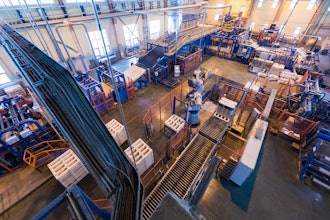Total Productive Maintenance is a comprehensive manufacturing improvement program focused on improving the effectiveness of plant equipment through increasing equipment availability, avoiding breakdowns, reducing operating delays, and enhancing output quality with the ultimate goal of accomplishing production with zero defects.
While the benefits might sound appealing, implementing Total Productive Maintenance (TPM) program is very challenging.
The overall statistics are not encouraging. According to Ed Hartmann, President of International TPM Institute, Inc.:
‘At least every second attempted installation of Total Productive Maintenance (TPM) results in failure.’
To increase the odds of success, the TPM project team must quickly demonstrate both the staying power of their initiative and the value of their efforts. For example, improving the throughput of machined parts through a mill not only demonstrates the value of the TPM effort, but also reduces personnel resistance to future improvements.
These objectives are achieved by assigning responsibility for routine machine maintenance to line operators, using failure mode analysis to schedule planned maintenance, and applying tools such as root cause analysis to eliminate quality rejects. A principle metric for measuring TPM benefits is overall equipment effectiveness or OEE, a composite measure taking into account equipment availability, machine performance or run rates, and output quality. An associated goal is ensuring a healthy and safe work environment.
Below are five critical early challenges every manufacturing company should focus on when beginning a TPM implementation. These challenges are not necessarily sequential but will overlap.
1. Securing top management support and allocating adequate resources to the project.
Without top management support, it is difficult for the TPM project team to make significant headway. The entire organization will understand what is important to top management and will respond accordingly. If people do not believe the project efforts are a priority, then those efforts won’t be important to the individuals at the supervisory levels or on the manufacturing line.
Furthermore, if top management fully supports the implementation, then sufficient resources will be assigned to the project. These resources should include some to the best people in the organization and should be attached to the project team on a full-time basis. Part-time personnel from various departments must also be made available for temporary assignments as the project moves forward.
2. Developing a comprehensive project plan and obtaining buy-in.
A comprehensive project plan should be developed and presented to the organization. The program should illustrate schedules, resource requirements, and projected benefits. Presentation of the project tasks, work steps, and other plan materials should result in buy-in from all levels of the organization.
Work can begin immediately and should focus on achieving a relatively quick ‘win’ that can be demonstrated as an ‘island of success.’ Select an area offering excellent opportunities for immediate, positive impact, where personnel support is high, and is manageable in size.
For example, in a 2013 case study of a TPM implementation in an automotive plant, the project team selected a small machine shop as an initial study department. Four pieces of equipment (referred to as key model machines) were selected and 4 TPM activities were initiated:
- 5S implementation
- Autonomous maintenance
- Focused improvement
- Planned maintenance
A maintenance plan was prepared and OEE was tracked. Following implementation of TPM methodologies the four pieces of equipment showed an average 22% improvement in OEE.
3. Developing a lean culture across the organization.
Before beginning a TPM program the organization should embrace the culture of lean improvement. Training, formation of cross-functional teams, and application of lean principles should be in place. Employees should be engaged in a continuous process of applying lean techniques to eliminate waste, increase quality, and maintain high levels of safety.
When employees are receptive to change and accustomed to process analysis and modification, TPM activities are much more readily accepted.
4. Providing TPM training to all personnel.
Training should take place early in the project’s lifecycle. All employees should be exposed to both the TPM methodology as well as essential lean techniques. As part of securing commitment to the project, all top management personnel should be given TPM training and, as a result, understand the program’s benefits and requirements.
Knowledge of TPM payback can help obtain needed commitment and support from reluctant senior management during the early phases. Gaining buy-in and support becomes easier as the project team records demonstrable benefits from TPM efforts.
5. Implementing CMMS to support maintenance projects
As TPM progresses, improvements to the operation and maintenance of manufacturing equipment play a significant role in delivering benefits. Initially, autonomous maintenance, the first pillar of TPM, is implemented by assigning responsibility for the equipment’s routine maintenance to machine operators.
Later, using CMMS, planned maintenance (the third TPM pillar) can be introduced to help reduce downtimes through both scheduled maintenance and reductions in emergency breakdowns. The project team should track improvements via metrics such as OEE.
Conclusion
Overcoming the early challenges of a TPM program is one of the critical factors for achieving a successful implementation. Because a project such as TPM is so visible within an organization, the manner in which roadblocks are handled by the team colors the effectiveness of the entire TPM project.
Successfully meeting these obstacles helps smooth the inevitably bumpy road as the team moves forward. Failure to adequately manage these challenges, however, means the project team will not only be facing a reputation for failure but will also be missing some critical foundational components needed for later project success. Anyone contemplating a TPM program should anticipate and pay particular attention to meeting these early challenges.
Bryan Christiansen is the founder and CEO at Limble CMMS.























